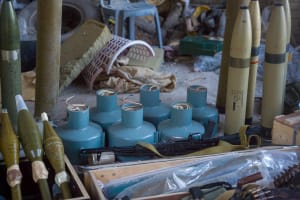Jerusalem approves controversial plan for ‘Burj Khalifa’ tower close to Yad Vashem and Mt. Herzl military cemetery
‘Burj’ tower will be the tallest building in the capital when finished

The Jerusalem District Committee Planning and Building Committee earlier this month approved a plan for the Epstein compound on the western side of the city near Mt. Herzl, which includes the construction of a 40-story tower that some are calling the "Burj Khalifa" of Jerusalem.
The compound will combine residential, commercial, office, and hotel spaces on Herzl Boulevard between the Kiryat Hayovel and Bayit Vagan neighborhoods and adjacent to the light rail line. The project is being promoted by M.O. Epstein Ltd. and designed by the international architectural firm Adrian Smith and Gordon Gill, which also designed the Burj Khalifa tower in Dubai.
The project has proven to be quite controversial due to its size and location. When completed, the “Burj Jerusalem” tower will be the tallest building in the capital city, with some complaining that it will disrupt the city’s skyline. Several groups have lodged about 200 complaints against the project, however, the district committee voted to proceed, while only requesting a few minor changes to the original plan.
The tower, which is the focal point of the complex, will rise to a height of about 170 meters (550 ft.) and will overlook all of Jerusalem including the National Memorial at Mount Herzl, where the military cemetery and the Yad Vashem Holocaust Memorial complex are located. Most of the complaints about the project have arisen due to its proximity to these two sites.
The plan for the complex and the tower was first submitted to Jerusalem planning authorities about six years ago and almost immediately garnered opposition. To satisfy some of the objections, the district committee required a few changes to the original plan. The building’s height was lowered from 193 meters (633 ft.) to 165 meters (541 ft.) by slightly reducing the ceiling height of each floor.
With Jerusalem facing a housing shortage, often exacerbated by wealthy expatriates, some objections have centered around the complaint that the 240 residential units would only benefit wealthy residents. Therefore, the committee decided that 50 of the residential units would be small (up to 55 square meters or 592 sq. ft.) while about 50 units would be reserved for long-term rental of at least 12 years.
The committee also said that despite complaints of the building’s height, a single tower would allow for more green space in the complex, while still serving the residential, commercial, and public needs. The committee also noted that other high-rise residential towers are being built in Jerusalem.
While many of the organizations that filed complaints cited the proximity to Yad Vashem and the Mt. Herzl National Cemetery, where many IDF soldiers are buried, the committee noted that neither Yad Vashem or Yad Labanim (a nationwide organization that memorializes fallen soldiers and supports their families) had objected. Yad Vashem never filed an objection, while Yad Labanim withdrew its objection.
The committee said: “The plan presents an exceptional architectural quality, which continues the momentum of renewal in Jerusalem, and will allow us to improve planning and create successful urban spaces. All of this will allow us to deal with the complex development tasks of the city.”
We recommend to read:

The All Israel News Staff is a team of journalists in Israel.














